I discovered this recipe only recently, and this simple mung bean soup has quickly become a favorite at our house.
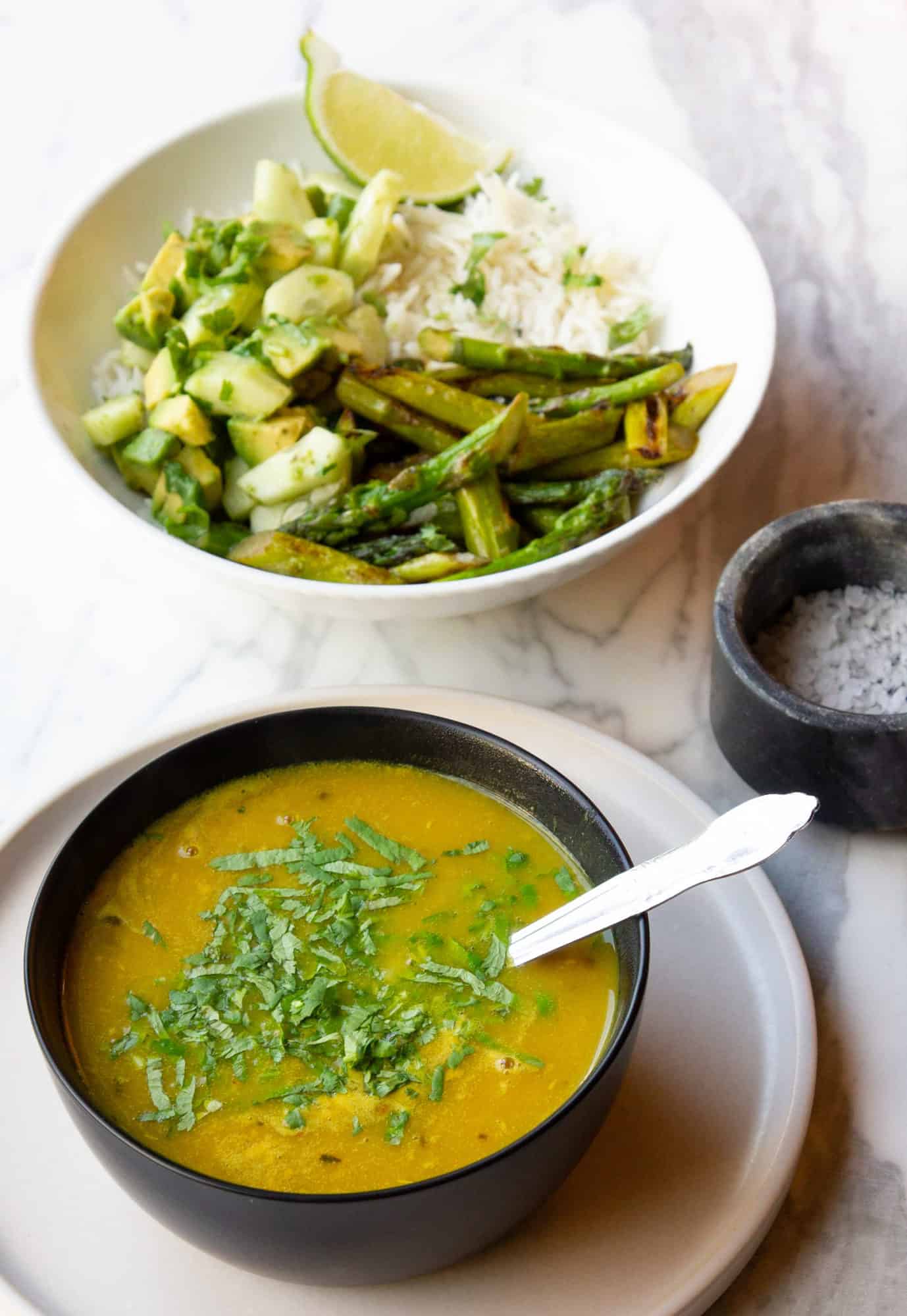
It’s funny … I am thinking to myself that mung bean soup probably doesn’t sound appetizing to many of my readers. Bean soup?
Well, not so fast. This mung bean soup is flavored with the everyday Indian spices of turmeric, cumin, asafetida, and ginger cooked in a little ghee.
After cooking everything together for a few minutes, the soup is finished with fresh cilantro and lime.
This handful of ingredients combine together to create a symphony of balanced flavor. Seriously. Have this soup and you need nothing else.
Mung bean soup is especially good if you want something easy to digest, such as if your tummy feels sensitive, or you are having a late dinner and you want something light.
Mung Beans: The King Of Dal
The humble mung/moong bean is known in India as the “king of dal,” according to five-thousand-year-old Vedic literature.
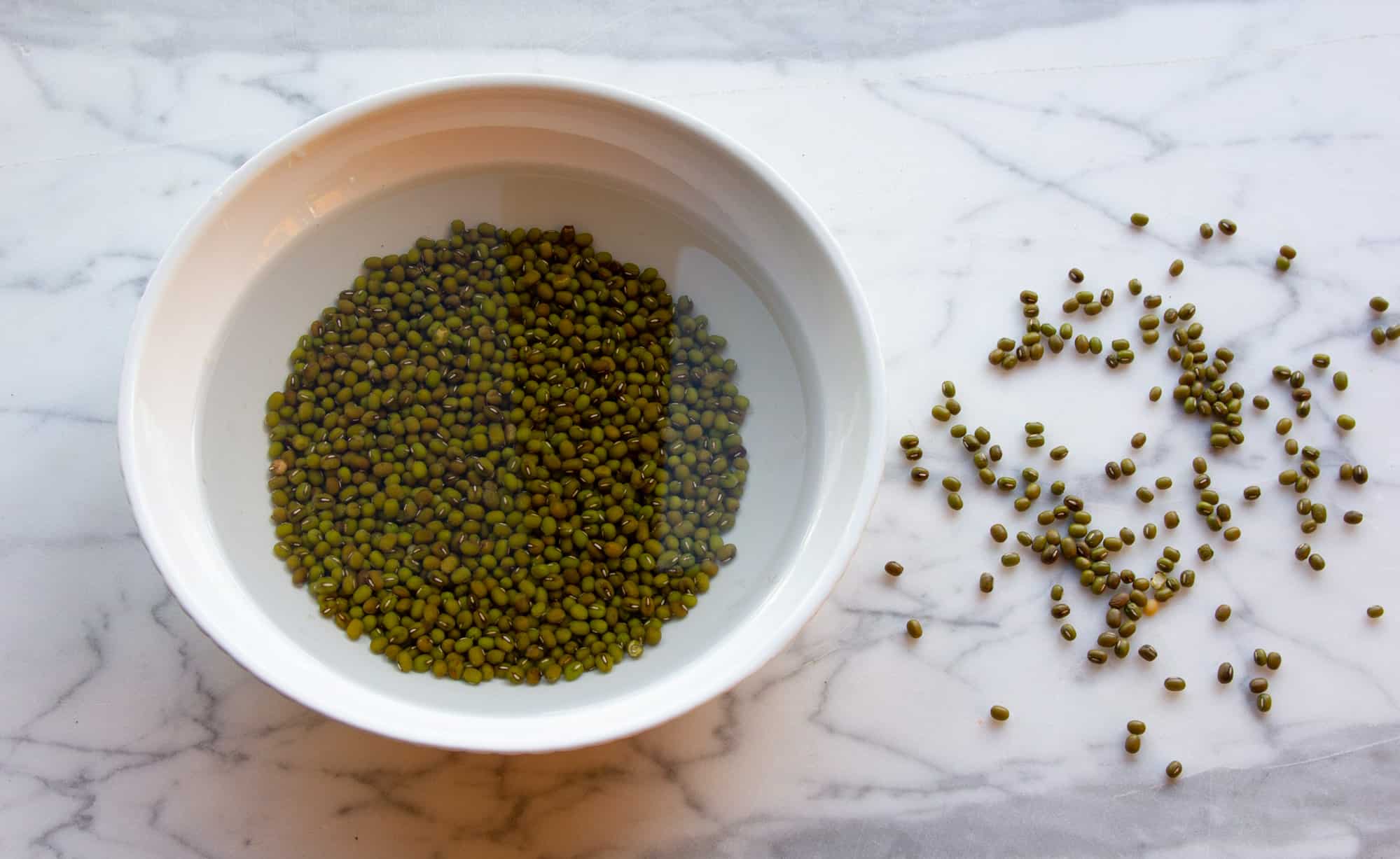
This is saying a lot, too, because India has dozens of varieties of dal, otherwise known as dried lentils, beans, and peas.
Dal is what we call in the west “legumes,” and dal also refers to an Indian soup or stew containing dal.
So why is mung bean the king of dal?
The answer is simple. It is the only dal that is considered "tridoshic" according to India’s ancient healthcare system, Ayurveda.
Ayurveda classifies individuals according to body types, which are known as doshas.
Mung beans are are considered to be a good food choice for basically anyone, which is what tridoshic means, and mung beans are the only dal with this particular quality.
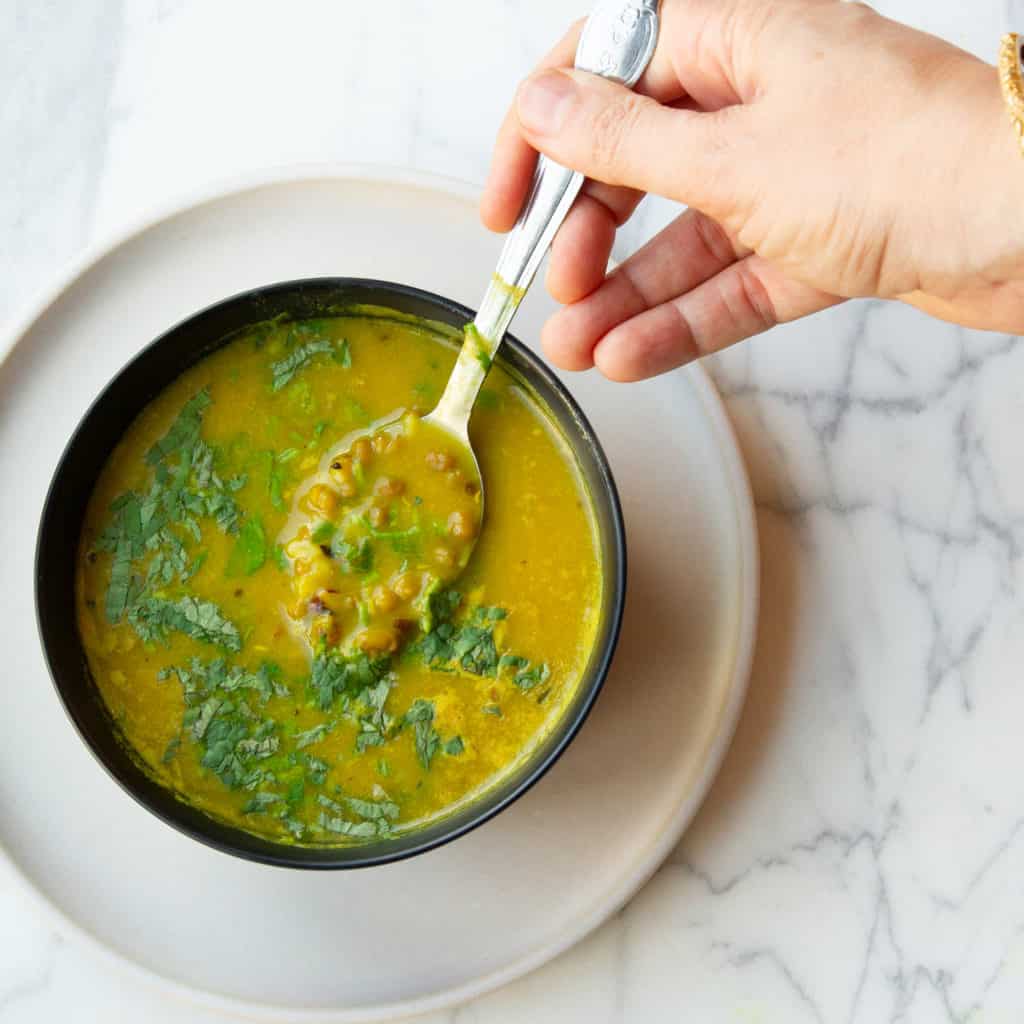
A big reason for the special status of mung beans is because they are easy to digest. They also have the benefit of being mildly cleansing.
John Immel, over at Joyful Belly, points out that mung beans have both soluble and insoluble fiber.
Insoluble fiber supports easy digestion, and soluble fiber has a mildly scraping action on the colon that helps keep it clean.
Overall, the taste of mung beans is a little astringent, as well as sweet.
Astringent taste supports healthy elimination by “helping to purge mucus from the bowels, rooting out toxins and parasites that may be lodged in your gut,” according to John.
Yuck! I know, but hey, this is all good stuff!
Use Your Pressure Cooker!
For my readers who haven’t yet ventured into cooking Indian food, this is a good recipe to start with, because it is very easy to make, and yet there are two techniques that you’ll need to learn.
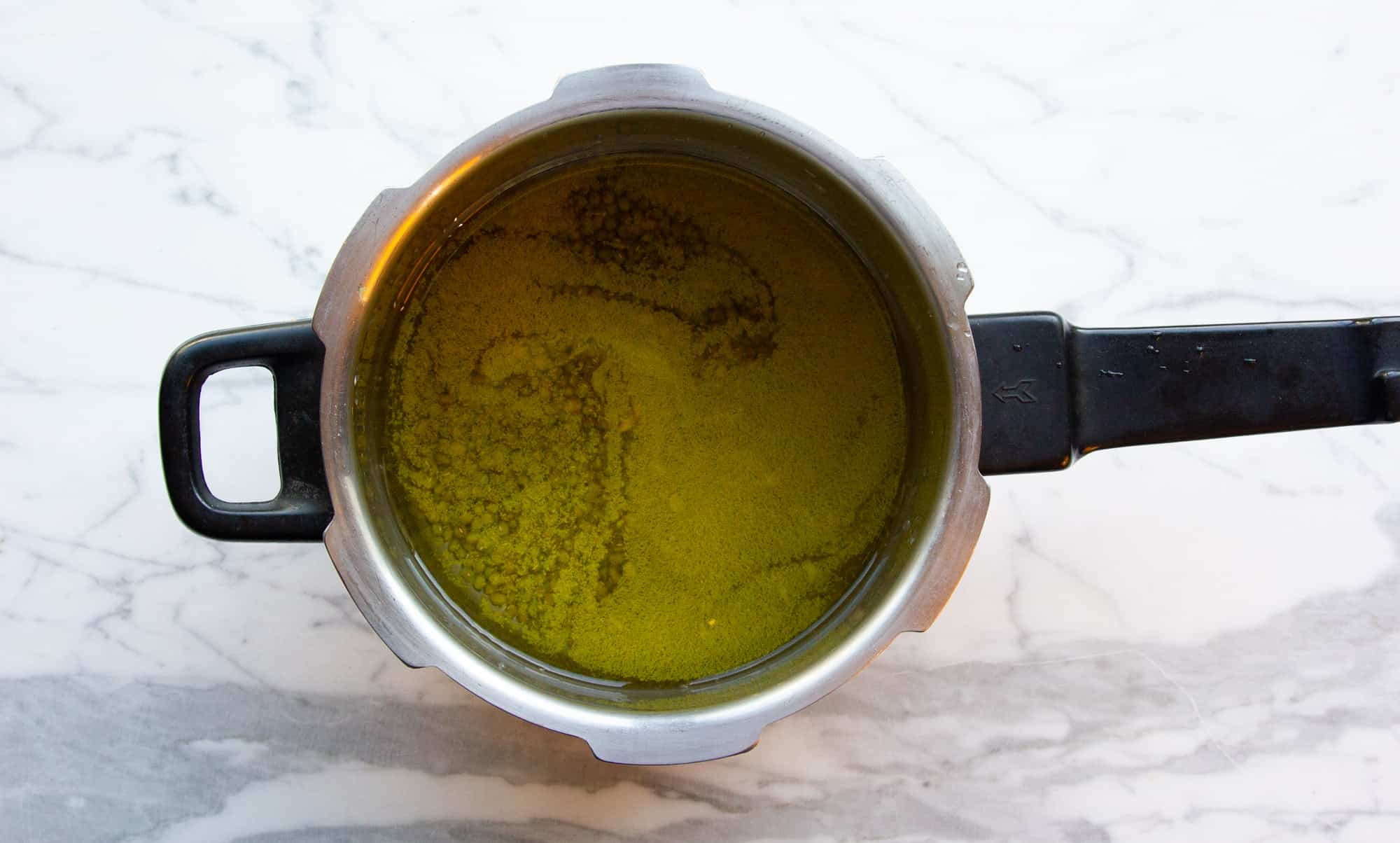
The first is cooking beans from scratch—ideally using a pressure cooker.
In the recipe instructions I’ve included three methods for cooking the mung beans.
The saucepan method is the longest and most time-consuming method for cooking beans, and the truth is, the beans will never turn out as well as they would if you used a pressure cooker.
Cooking dry beans in a pot will never get the beans as soft, or digestible.
Pressure cooking breaks down the tough skins of the beans, which is the insoluble fiber part that is typically difficult to digest.

You can also make this mung dal soup in around 10 minutes of cooking time using a pressure cooker. Amazing right!
Compare this to the 1-hour-plus that you’ll be waiting by the stove using a saucepan.
If you are serious about enjoying dal on a regular basis, I highly encourage you to invest in a pressure cooker, such as an Instant Pot.
Cooking beans, vegetables, soups, stews, and so much more, is a breeze using a pressure cooker.
You can check my post for more details.
Good Starter Indian Spices
The second reason this is a good Indian starter recipe is the fact that there are just four spices in this dish (well five if you count fresh cilantro, but you know that one).
Each of the spices—cumin seed, turmeric, ginger, and asafetida—are commonly used in Indian cooker, so they are a great place for you to get started.
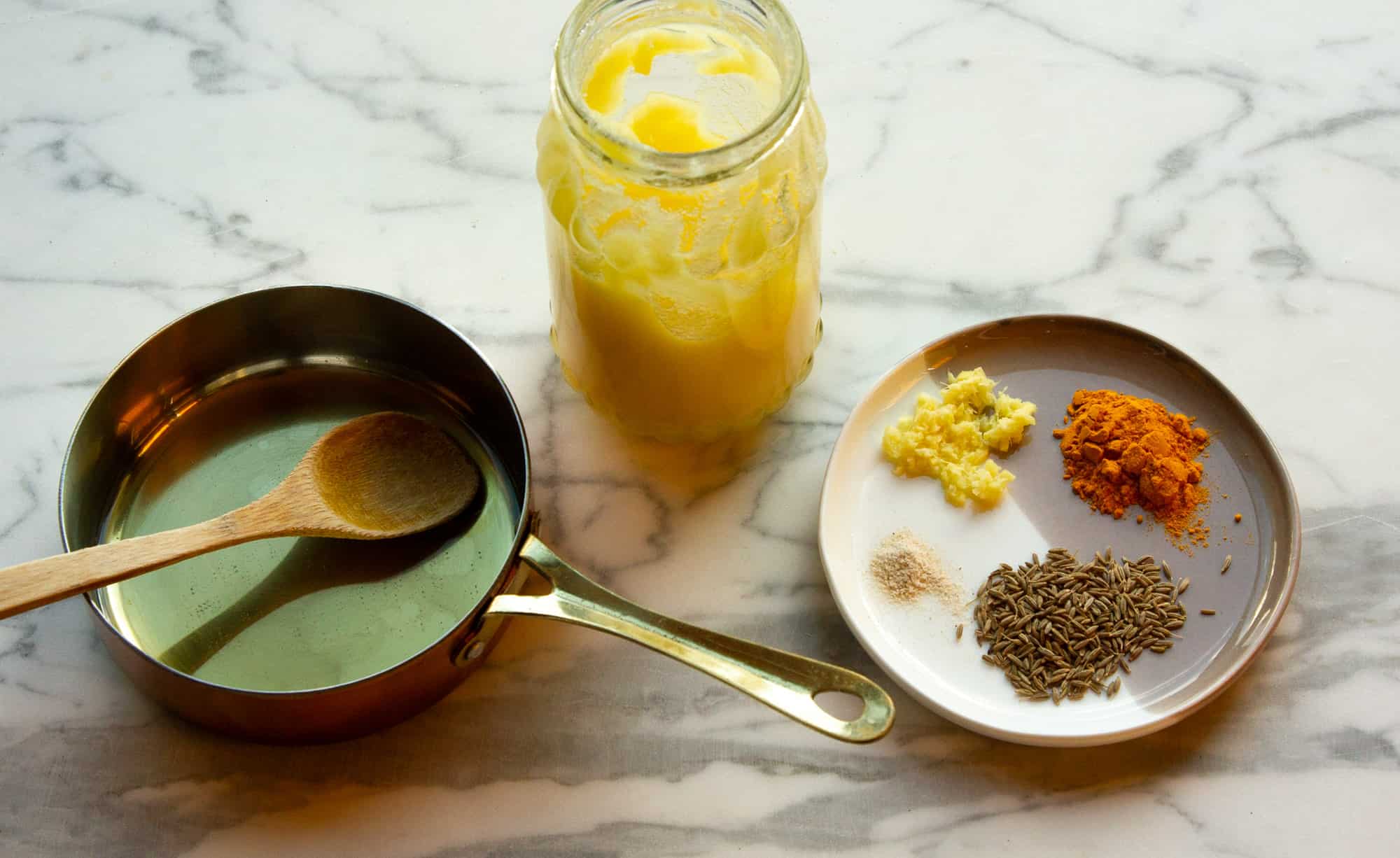
Cumin seed has an earthy taste. It’s supportive to your digestion, reduces any gas associated with eating beans, and adds a nice crunchy element to the mung bean soup.
Next up, turmeric is the number one choice to include in all your cooking in my opinion. I actually kind of do that, and you can read about my turmeric love affair here.
Turmeric is helpful for circulation, reducing inflammation, and so much more. It is also mildly bitter, so it adds that particular taste to the food, which is necessary for an overall balance of flavor.
Ginger is basically a panacea herb. It is warming, but not irritating, even if you tend to be hotblooded. There are so many uses for ginger too.
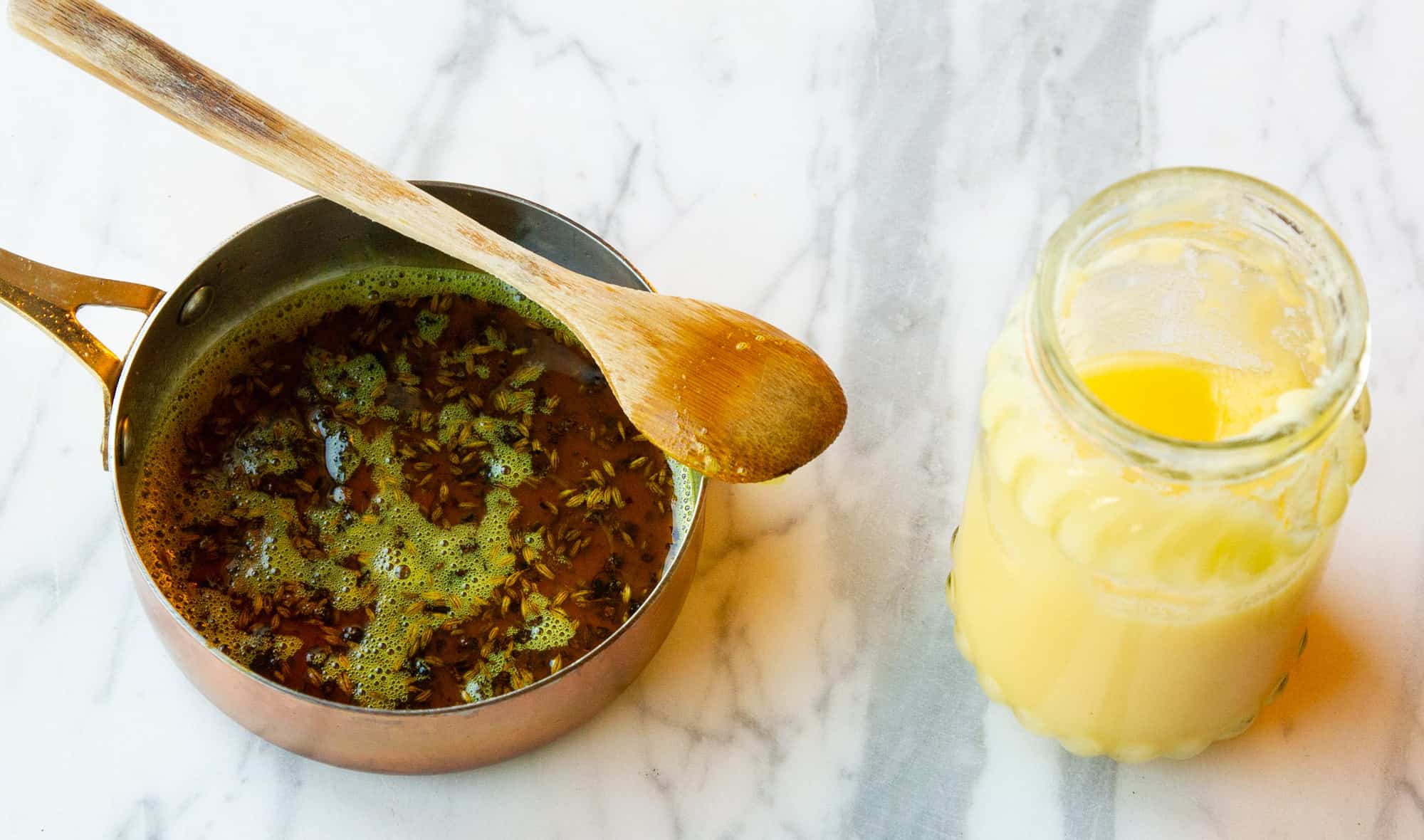
The only one here that might be new, or unusual, for you, is asafetida. This is the resin of a plant in the fennel family. It has a mild sulphur flavor that grows on you over time.
Asafetida is a great substitute for onions or garlic, so if you don’t have it yet, you could use onions in this recipe as a substitute.
I hope this helps you understand how to make mung bean soup, and how you might enjoy it in your household. You can purchase the necessary spices from my Amazon recommendations below.
Let me know if you have any questions, and how this recipe turns out for you!
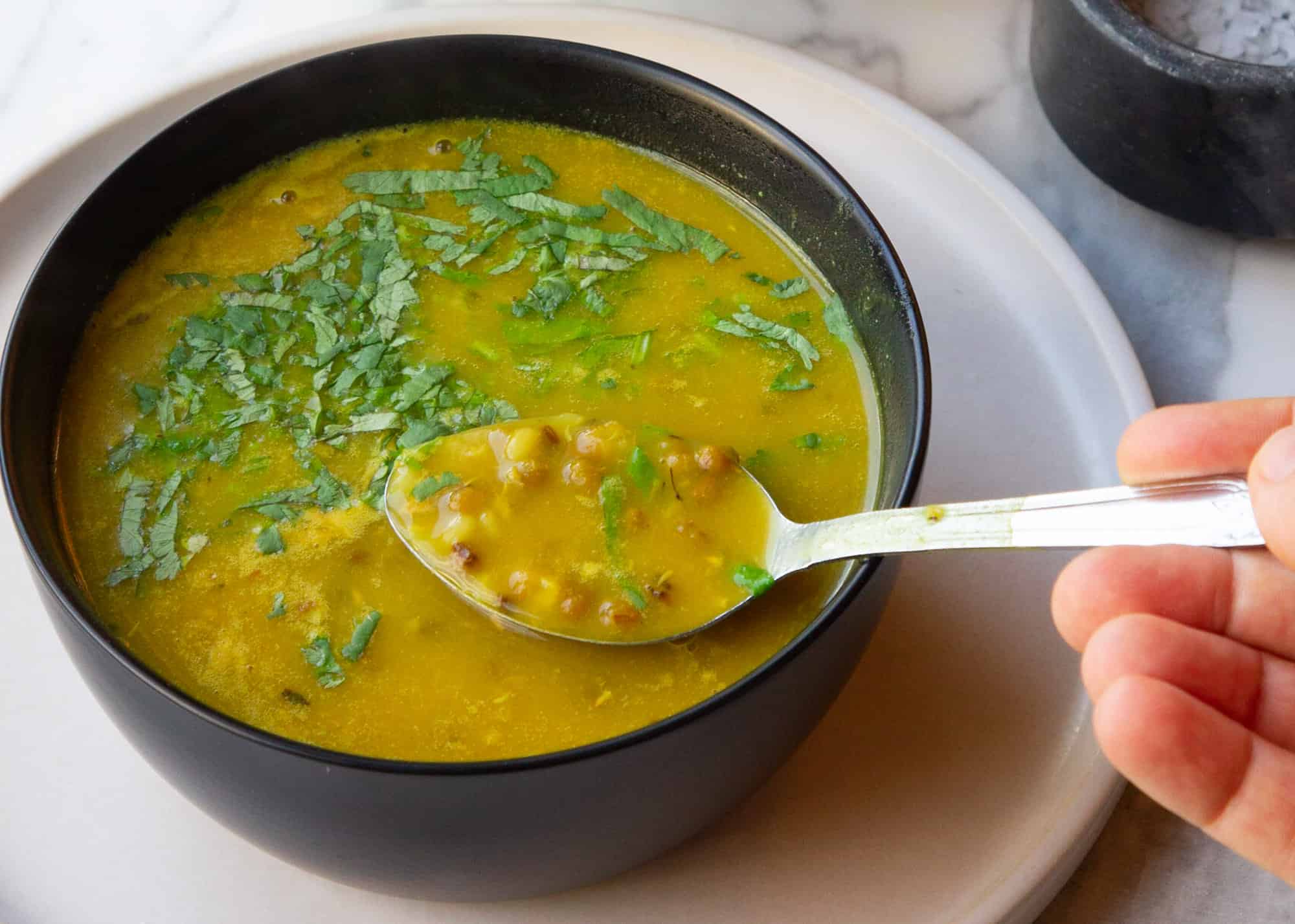
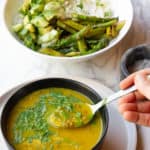
Mung Bean Soup
Helpful Kitchen Tools:
Ingredients
Cook the mung beans
- ½ cup whole mung beans
- 4 cup water
Temper the spices
- 1 tablespoon ghee
- ½ teaspoon cumin seeds
- ½ teaspoon fresh ginger, grated
- ½ teaspoon turmeric powder
- pinch asafetida
Finish the flavors
- ½ teaspoon Himalayan pink salt
- ½ lime, freshly squeezed
- ½ cup cilantro, chopped (optional; but especially good in summer)
Instructions
Method
Cook the mung beans
- Soak mung beans for 4 hours, or overnight. Drain the soaking water and rinse 3-4 times until the water runs clear. Add mung beans with 4 cups cold water and a pinch each of turmeric and salt to a pressure cooker or saucepan.
- Cook according to one of the following three methods:
Saucepan Method
- Bring beans to a boil on high heat. Reduce heat, and simmer for 60 minutes or more, until the beans are soft and breaking apart.
Stovetop Pressure Cooker Method
- If using a stovetop pressure cooker, secure the lid, and bring the cooker up to high pressure. Set a timer for 8 minutes, and reduce the heat slightly. After the timer goes off, turn off the heat. Wait 15 minutes, check for residual pressure, and open the lid safely.
Instant Pot Method
- If using the INSTANT POT, secure the lid and select the “Pressure” button. Set timer to 10 minutes. After cooking stops, allow the pressure to come down naturally for 15 minutes. Check for residual steam and open the lid safely.
Temper the spices
- Separately, heat a tablespoon of ghee in a small skillet on medium-low heat. Add ½ teaspoon cumin seeds and cook until they turn a few shades darker. Add a ¼ teaspoon grated fresh ginger, ½ teaspoon turmeric powder, and a pinch of asafetida. Cook until the ginger is just starting to brown. Turn off the heat and add spiced ghee to cooked mung beans.
Finish the Soup
- Heat the spiced mung beans again and add ½ teaspoons salt. Simmer for 3-5 minutes. Turn off the heat and add a squeeze of lime and the optional chopped cilantro. Taste, and adjust for salt, lime, and red chili. Add a little more if you like.
- Enjoy with, or without, a side of basmati rice.
Notes
Nutrition
If you liked this post, please share it with your friends on social media, or leave a comment below.
For more Buttered Veg lifestyle content, follow me on Pinterest, Facebook, Instagram, and Twitter.
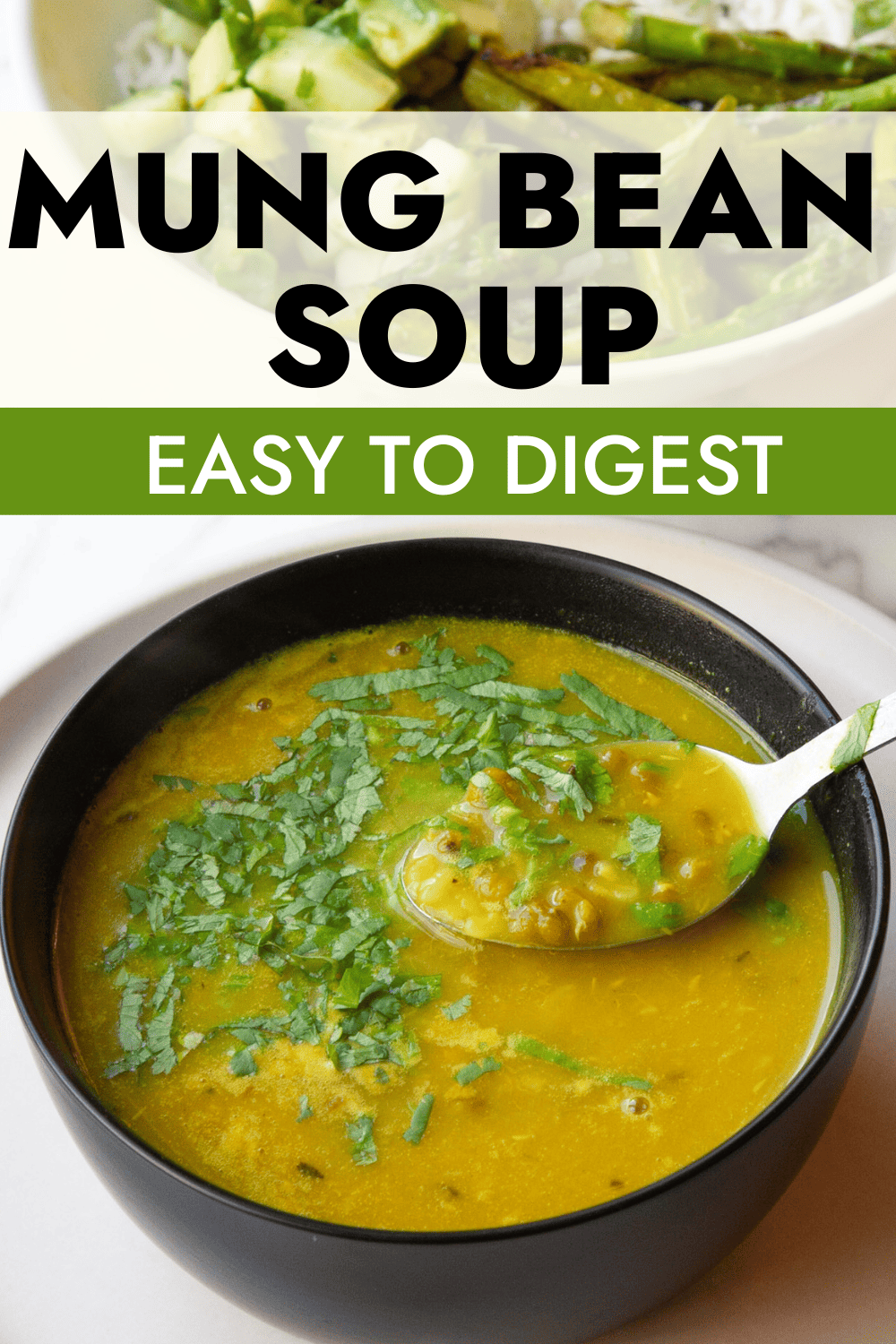



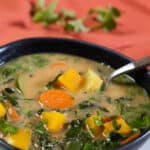
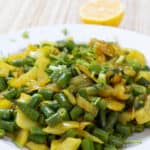


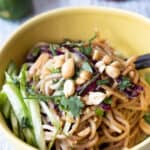

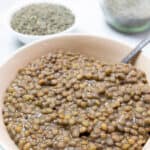
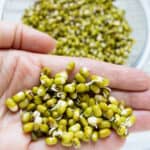
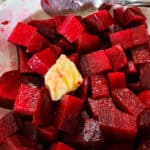

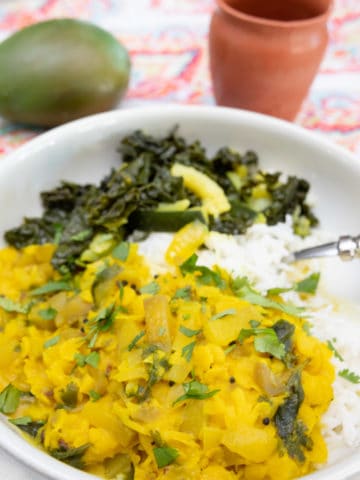
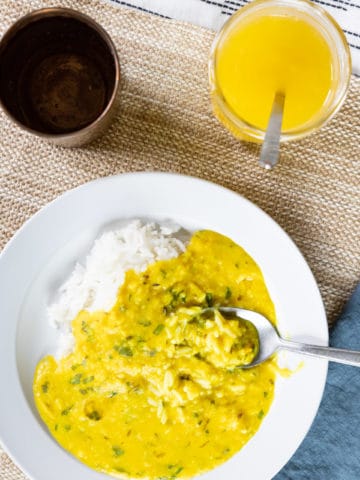
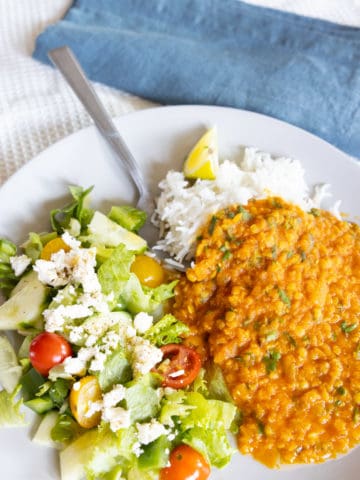
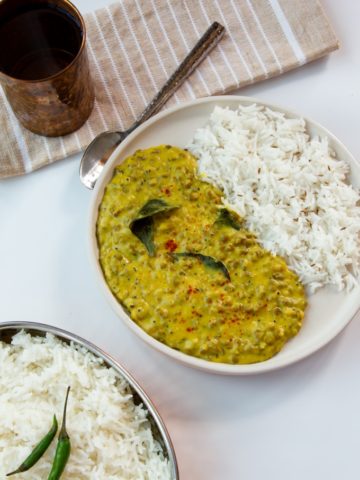
Bridget
Love this soup. So easy to make and tastes delicious. I like that it’s pretty light too and packed with nutrition. Also - thank you for providing instructions on all the different ways to make it (stove top, instant pot, etc). I love the instant pot method!
Andrea
Thanks Bridget! So happy that you're enjoying this soup. Mung beans are my favorite! Tasty and nutritious as you say! I agree that the Instant Pot is the nicest. Once you get that set and forget experience, you don't want to go back. I leaned on the stovetop cookers, so I understand them as well. That's why I am able to include that instruction. Happy Cooking, Andrea
sanchayita debverma
I always try and read your recipes. This is awesome. Will give it a try. Why don't you also suggest some food for respiratory support during monsoon times?
Andrea
Hi Sanchayita,
This is a wonderful request. Your monsoon time has begun now? Please let me know the time frame so I can be more aware, and then I am going to do my best to provide some suggestions. Right now I am thinking about Rasam! Take care, Andrea
Sree
Andrea,
Thanks for the post. It is so healthy and delicious. Mung dal, Mung dal kichadi... everything associated with Mung dal is my favourite. Your writing made my mouthwatering... You are right.. It is a perfect recipe for a healthy soup. We can have it even if we are having fever. It will give a warm feeling. Once again thanks for posting.
Andrea
Dear Sree, Thank for this comment that gives feedback from someone who really knows Indian food. This means a lot coming from my mung dal sister 🙂 — Andrea